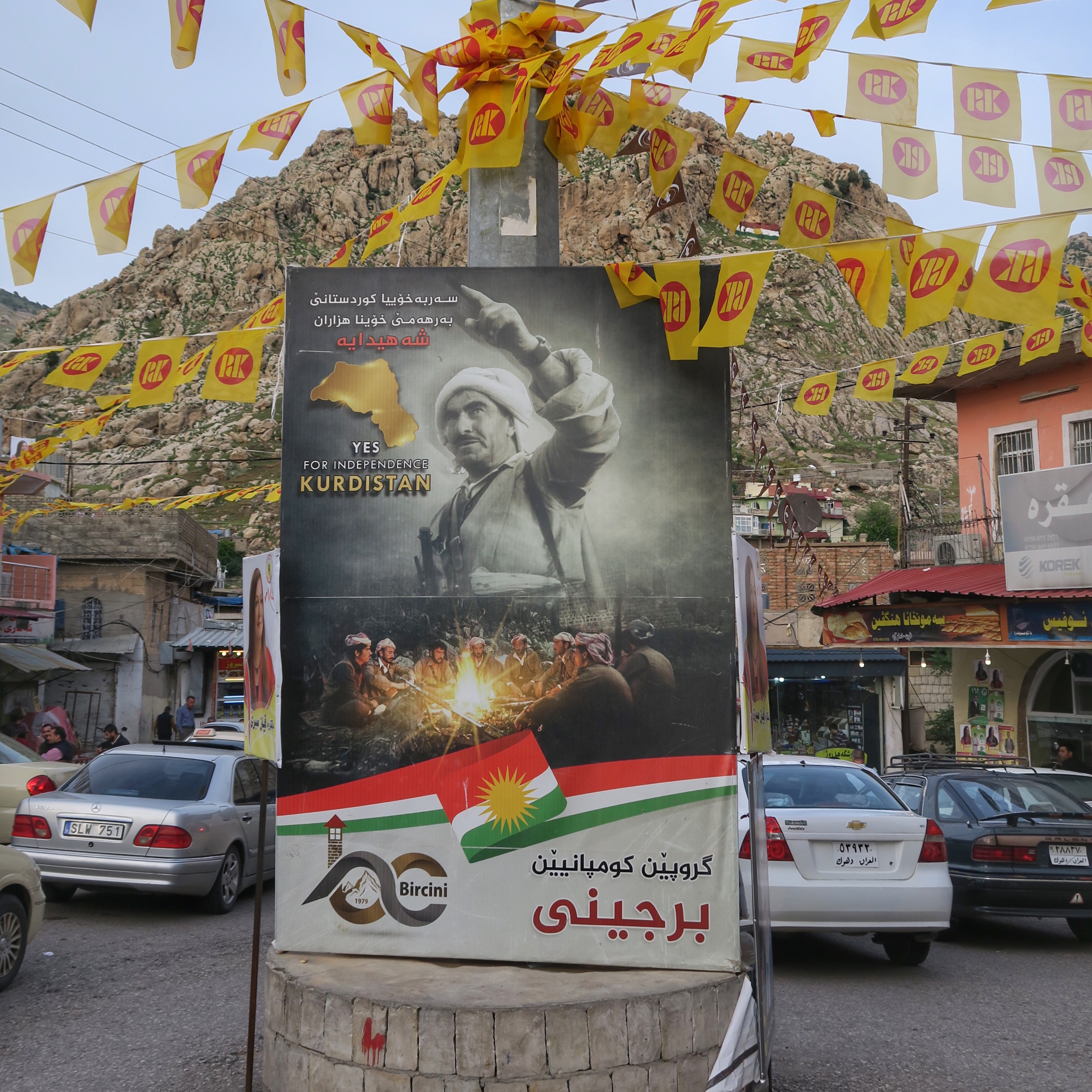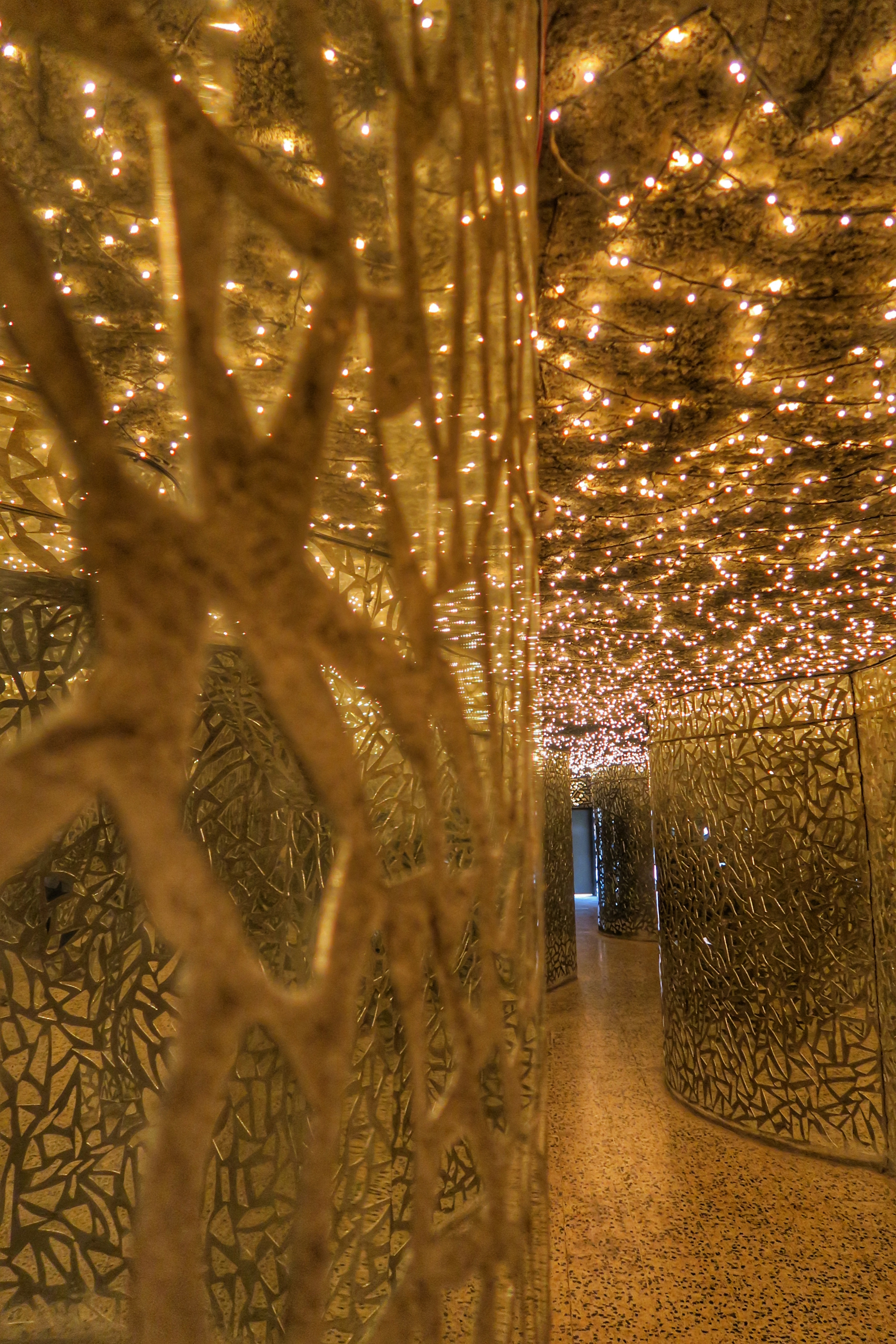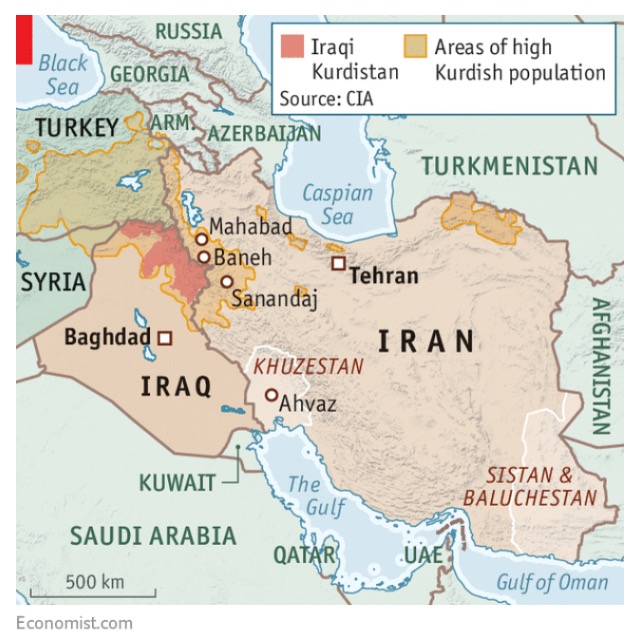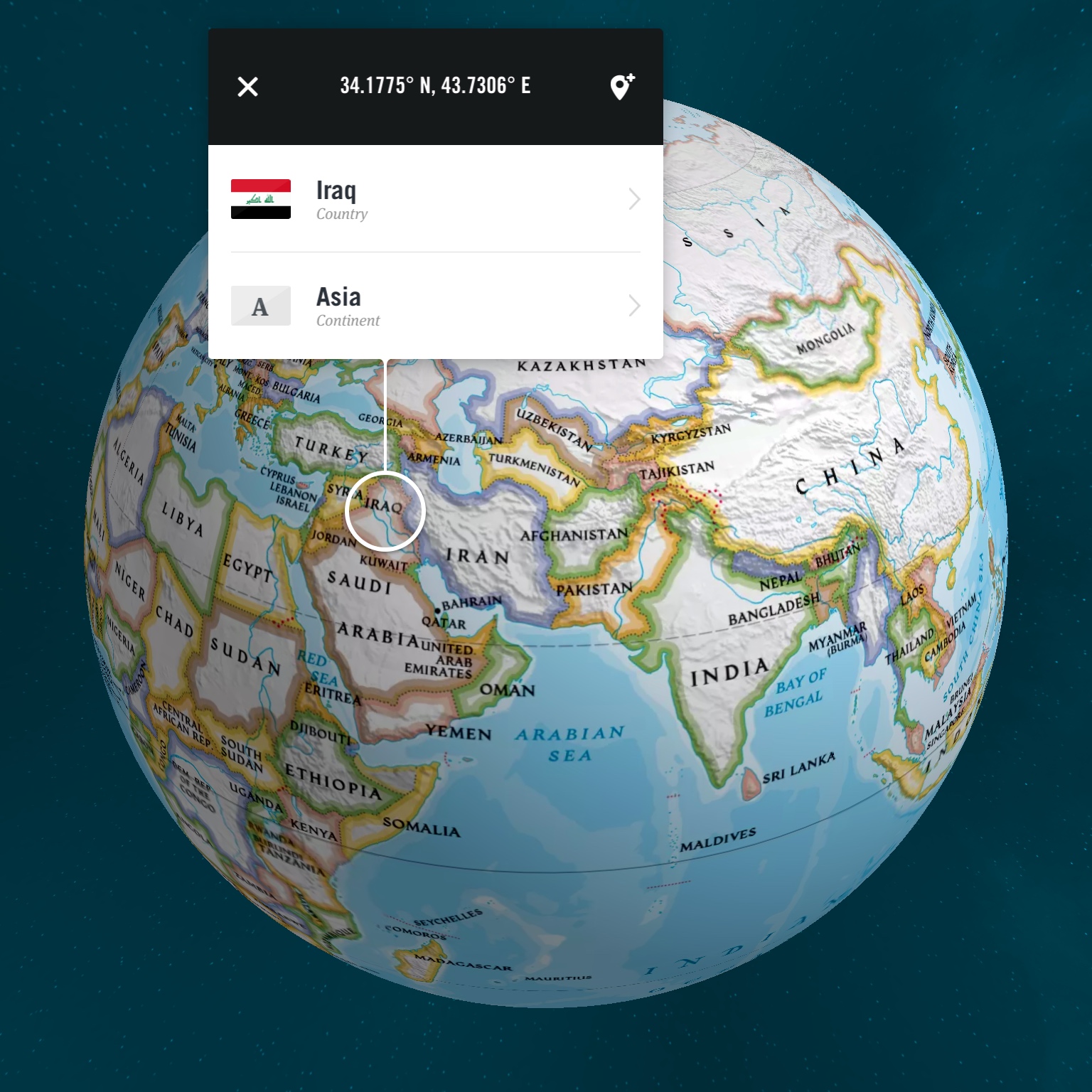
Our tour around Iraqi Kurdistan was just delightful. The people were friendly and curious, the landscape beautiful, the history epic, but always in the background was a sea of Kurdish flags and the issue of Kurdish independence.

The road to Kurdish statehood has been long and bloody. The Amna Suraka Museum, in Sulaymaniya, and the Halabja Memorial, 240km northeast of Baghdad, bear witness to the recent horrors endured by Iraqi Kurds at the hands of Sadam Hussein's brutal Ba'ath regime. It is impossible to visit these Museums and not be moved.
The Amna Suraka or Red Prison, in Sulaymaniyah was the northern headquarters for the Mukhabarat, Saddam Hussein’s intelligence agency. The most famous section of the Museum is the art installation featuring 182,000 pieces of broken mirror and 4,500 lights. The pieces of mirror symbolising people killed and the lights symbolising the Kurdish villages destroyed.

Between 1986 and 1989, during the al-Anfal Campaign (Anfal means 'spoils' in Arabic), thousands of Kurds were imprisoned, tortured and killed within the Red Prison. Much of the original complex has been retained as a Museum with one large section dedicated to martyrs for the Kurdish cause.
The prison cells are now empty and clean, but the graffiti on the walls of the room where adolescent boys were held have been preserved behind clear perspex. I found this hand-drawn superhero just as moving as the graphically recreated scenes of imprisonment and torture.
I wonder what became of the child that drew this image?

On 16 March 1988, chemical bombs were dropped on the City of Halabja. The deadly mix of chemicals, most likely some combination of cyanide and mustard gas, killed between 3,200 and 5,000 people and injured 7,000 to 10,000 more, most of them civilians.
The dead were hastily buried in mass graves within the local cemetery. We visited two of them. They are now covered with concrete and tile with a simple memorial plaque. The largest holds 1,500 bodies.

We then visited the nearby Halabja Museum. The most famous image within the Museum is that of a Kurdish man and child lying dead. His body shields the child, who stares blankly into the sky; mouth agape and silent. This hearbreaking image is immortalised in a bronze sculpture, which sits at the entry to the Museum.

The Museum has archival photos and videos of the victims and news footage and clippings documenting the event. There is also a small section dedicated to those responsible. Taking pride of place is the death certificate of Saddam Hussein.
The Kurds are the dominant ethnic group in northern Iraq or Iraqi Kurdistan, and make up 15-20% of the total Iraqi population. They are a significant minority group in the neighbouring countries of Turkey (15-20%), Iran (10%) and Syria (7-10%). They are also the largest ethnic minority group in Armenia.
The Kurds are the fourth largest ethnic group in the Middle East, numbering between 25-35 million people, and yet they are State-less.
A referendum held last September in Iraqi Kurdistan revealed that over 90% of voters wanted an independent Kurdish state.

Analysts believe that the establishment of a Kurdish republic would lead to greater instability within the Middle East. They fear that it would trigger a domino effect where Kurds in Turkey, Syria and Iran would also demand autonomy.
The Governments within the region are united when it comes to the issue of a Kurdish State. They will not support it.
The Iraqi Government called the referendum 'illegal' and called on the Kurds to 'cancel' the result. The Federal Government then forcibly seized the City of Kirkuk, and its lucrative oil reserves, and closed the airports in Erbil and Sulaymaniya. Fortunately they re-opened Erbil Airport just in time for our trip.
The Museums that we visited documented the atrocities committed against the Kurds by Saddam Hussein and his Ba'ath regime. Unfortunately, these events just scratched the surface of the treatment endured by the Kurds over the years.
They are no strangers to suffering, not just in Iraq but in Turkey, Syria and Iran. Understandably, these grievances have helped fuel the nationalist cause.
Iraqi Kurdistan has, over time, created a de facto State, they have their own parliament, military (the “Peshmerga”), borders and foreign policy. Up until recently, they even had their own oil-based revenue. So while it falls short of an independent state, I wondered if this is the best that they can achieve right now.
Where on earth....
